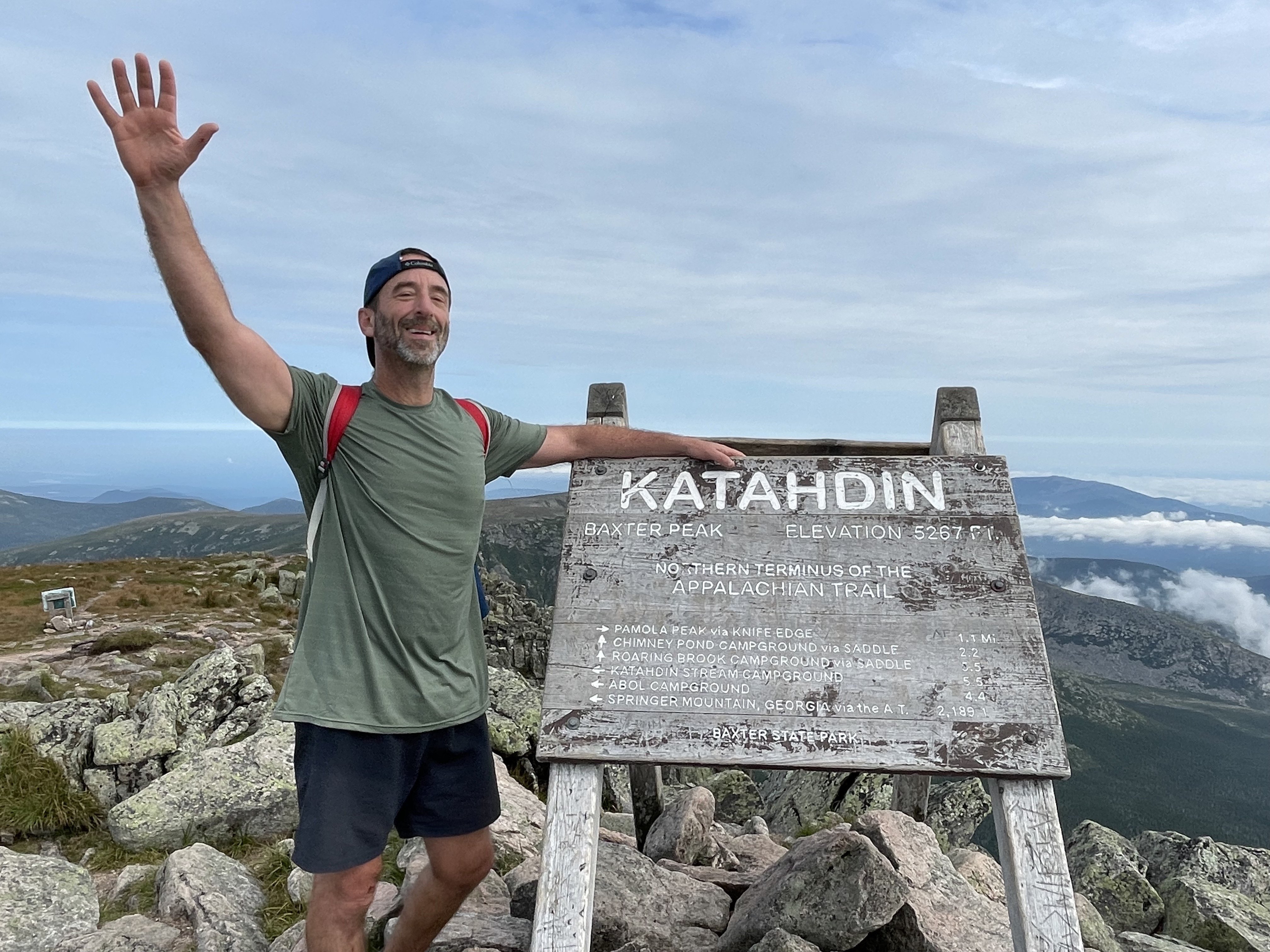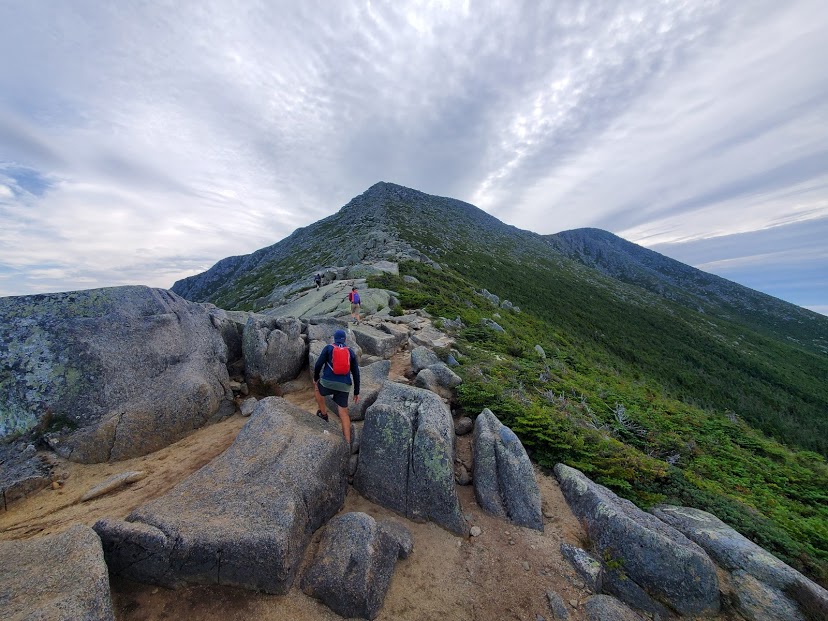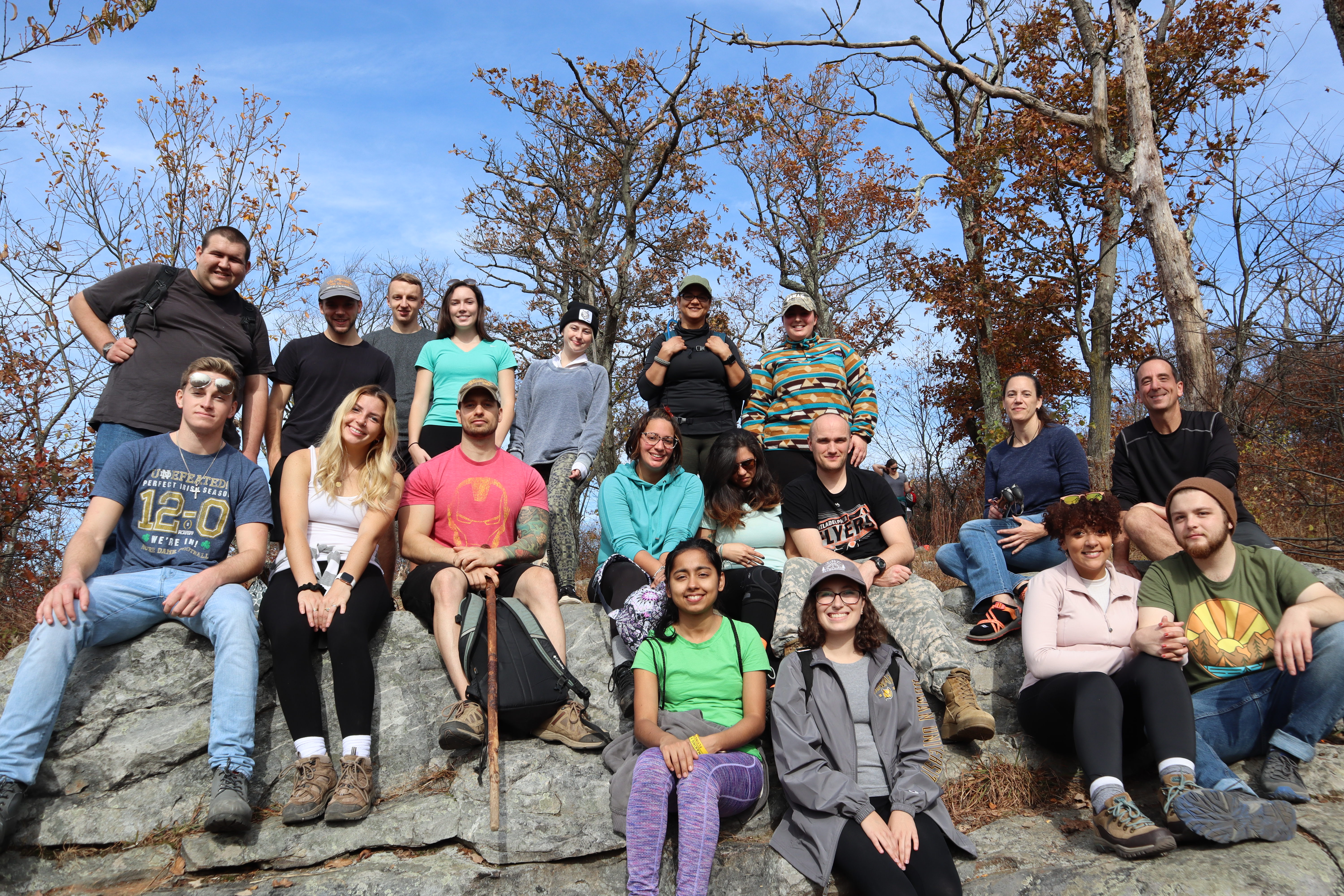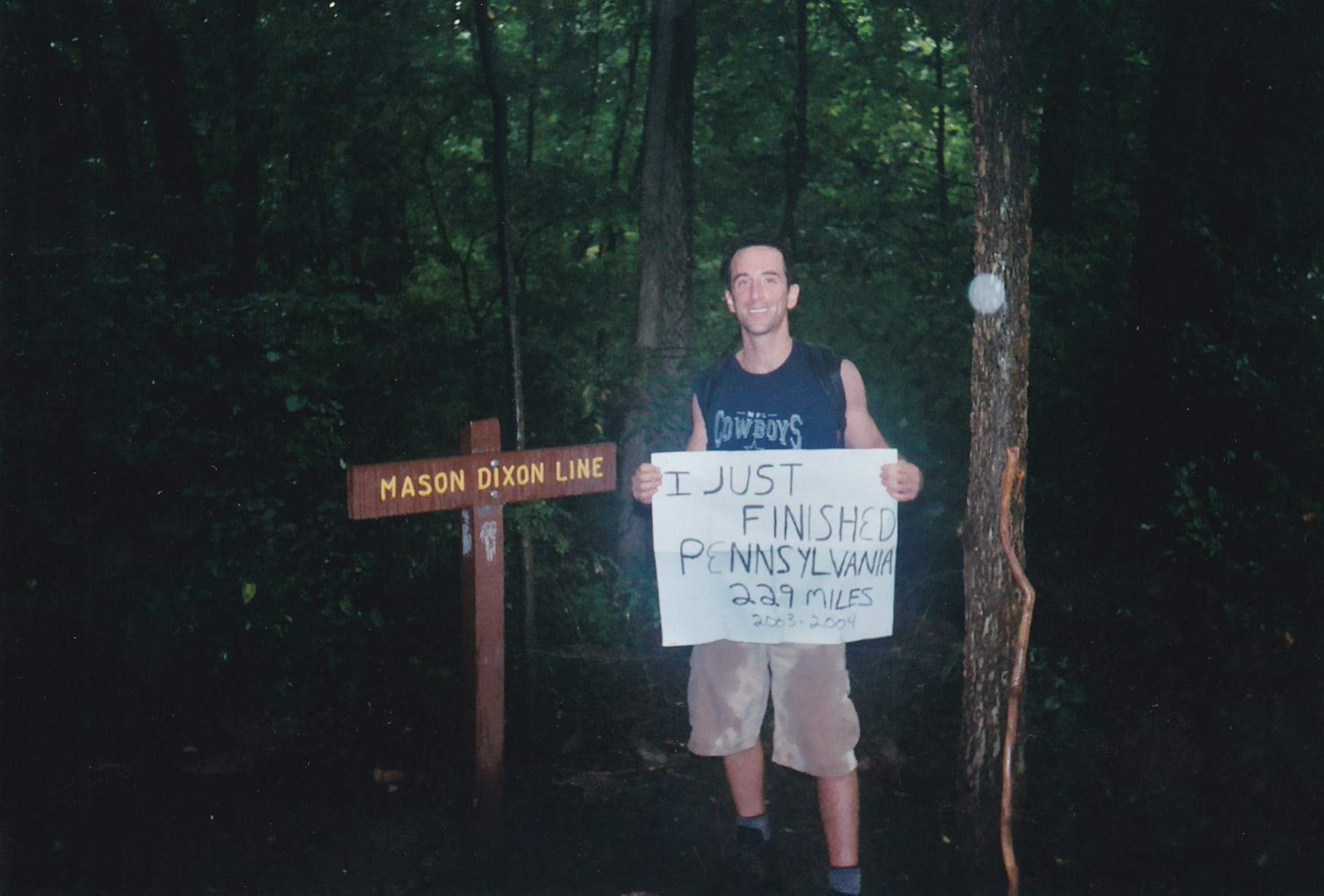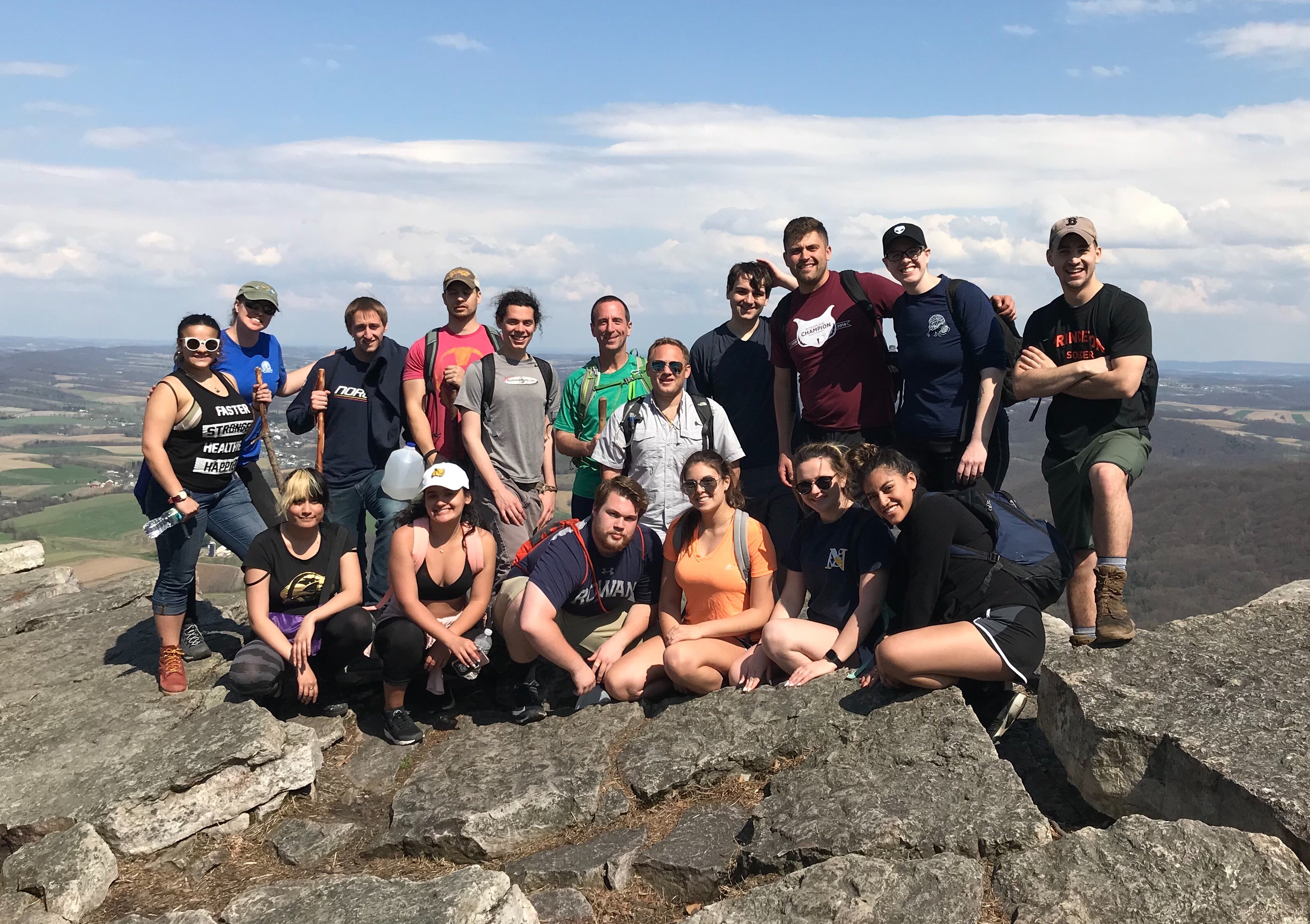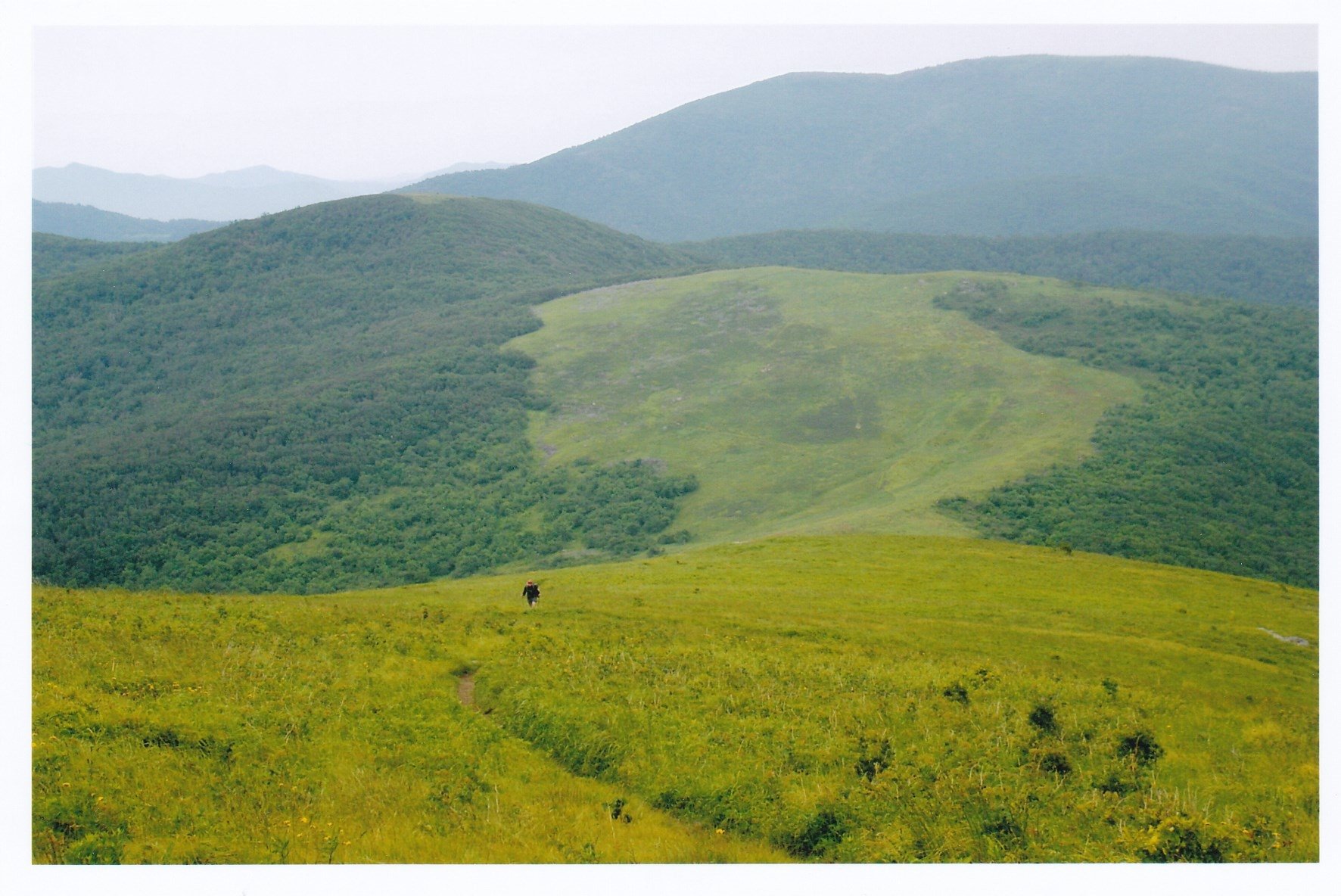Geography prof’s Appalachian experience makes many teachable moments
Geography prof’s Appalachian experience makes many teachable moments
For Rich Federman, hiking the Appalachian Trail was literally the trip of a lifetime.
A senior lecturer in the department of Geography, Planning and Sustainability within Rowan University’s School of Earth & Environment, Federman finished his 19-year quest to hike the Trail in its entirety this summer, a trip in which he developed untold numbers of callouses, memories and classroom lessons.
The Appalachian Trail, or the AT, as those in the know, know, runs some 2,200 miles through 14 states. The main section starts in Georgia and heads up through North Carolina, Tennessee, Virginia, West Virginia, Maryland, Pennsylvania, New Jersey, New York, Connecticut, Massachusetts, Vermont, New Hampshire, and, eventually, concludes in Maine.
Though some “thru-hikers” attempt the main trail in its entirety in one season, the vast majority do as Federman did and consume it in pieces. His journey involved roughly 100 separate hikes, more than 464,500 feet of total combined elevation, and a capstone trip this summer hiking 100 miles over seven days.
“This morning my body seems to be feeling every one of them!” he emailed colleagues at the trip’s conclusion.
Federman, who said he discovered hiking at a time in his life when some of his friends were competing in high endurance sports, sought a calmer path forward, one that jibed with his love of nature and teaching geography.
“I always liked walking and thought maybe I could walk long distances and that would be my thing,” he said. “I thought I could get into this thing called the Appalachian Trail and finishing it was always the goal.”
But as he soon found, hiking a massive trail like the AT is far more complicated than simply walking. While some sections can be crossed in simple sneakers, passing along roadways and through centers of towns, many others are technical, heavily wooded, up and down mountains, putting hikers smack in the middle of nature.
“I’ve seen probably ten bears,” he said. “The most dramatic encounter was when an adolescent bear rolled down the steep hillside and landed on the trail in front of me in Tennessee. I’ve also had encounters with rattlesnakes. I’ve been a couple of strides from stepping on one.”
Federman, who covered about 120 miles of the trail per year, said the AT always drew him back, mile after mile and trip after trip, with his final 100-mile push July 30 to Aug. 5 ending in Baxter State Park in Maine.
Surprisingly, he said, the biggest draw wasn’t necessarily the goal of completing the trip or even the scenery along the way, but the people he met.
“There’s a lot of people on the trail, and they look out for each other,” he said. “You stop and chat along the way and at camp at night and everyone is willing to share their stories. It’s a very social trail.”
Out of the classroom, into the classroom
The Rowan Geo Club advisor since 2013, Federman has led dozens of hikes with students, faculty and staff, some along the AT and some along other New Jersey hiking trails like the Batona, a 53-mile jaunt through the Pine Barrens.
“Our hikes have inspired students to do things, like other athletic endeavors, even to pursue outdoor careers,” he said.
Along the way, the hikers sometimes talk geography – physical and human – like how the land formed and how people used and, sometimes, abused it.
A longtime teacher of the course “Geography of New Jersey,” Federman said such experiences lend themselves to the classroom, even if not all of his students head out to the woods with him.
“I teach the class every fall and spring, and one class each semester I devote to the Appalachian Trail,” he said. “About 70 miles of the AT are in New Jersey and I’ll show pictures of hikes, tell stories and use it to try to ignite interest in students about the trail and about the state. Many of our students are from points to the south, like Salem County, and don’t know about New Jersey’s mountains, never saw the Delaware Water Gap, and for them it’s eye opening.”
Federman also teaches a course called “Planet in Peril,” and with climate change clearly and undeniably wreaking havoc on the earth, there’s much to learn from the trail, he said.
“To me, it comes down to caring,” he said. “I think by introducing students to parts of nature it makes them care. Once they care, they’re receptive to information.”
